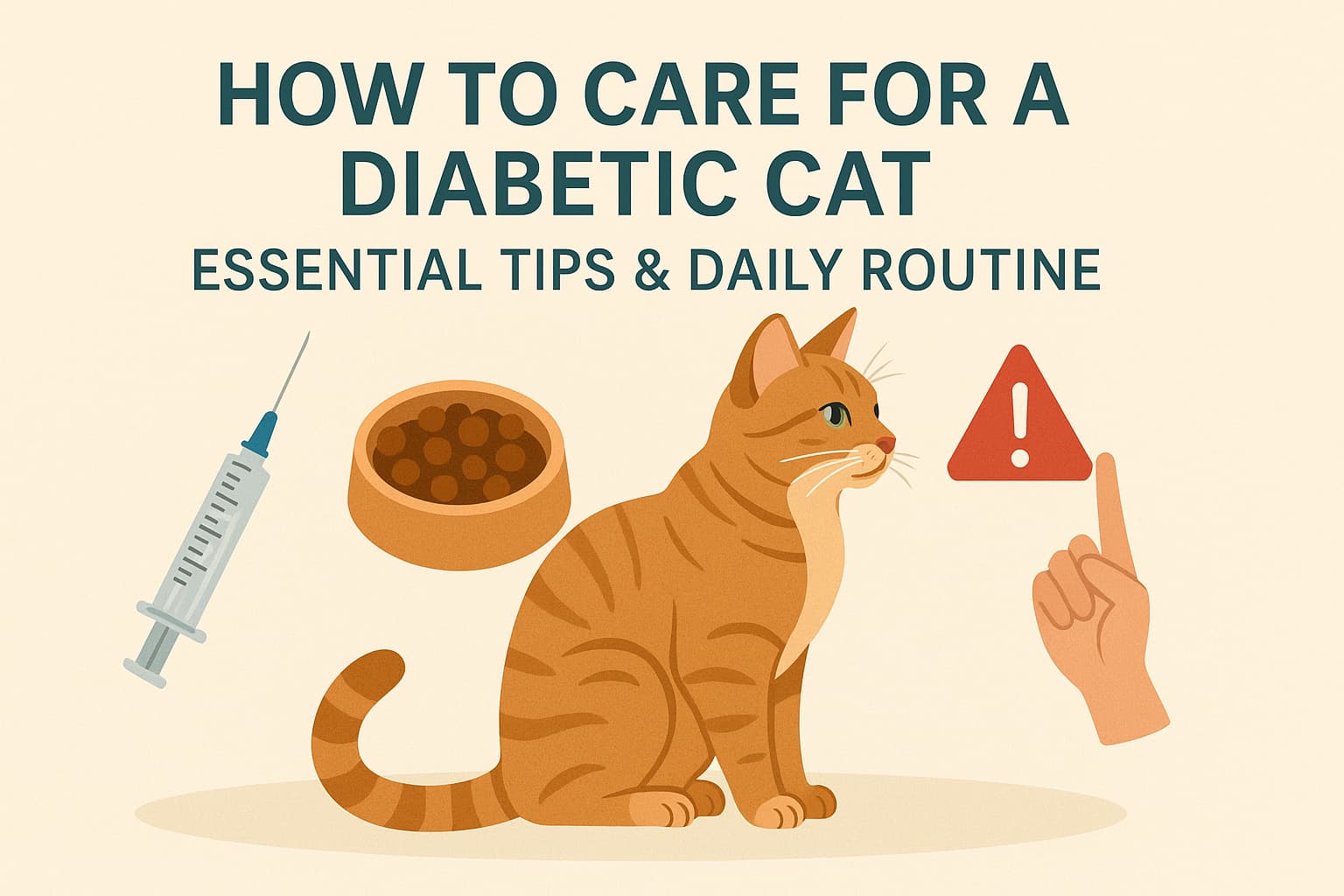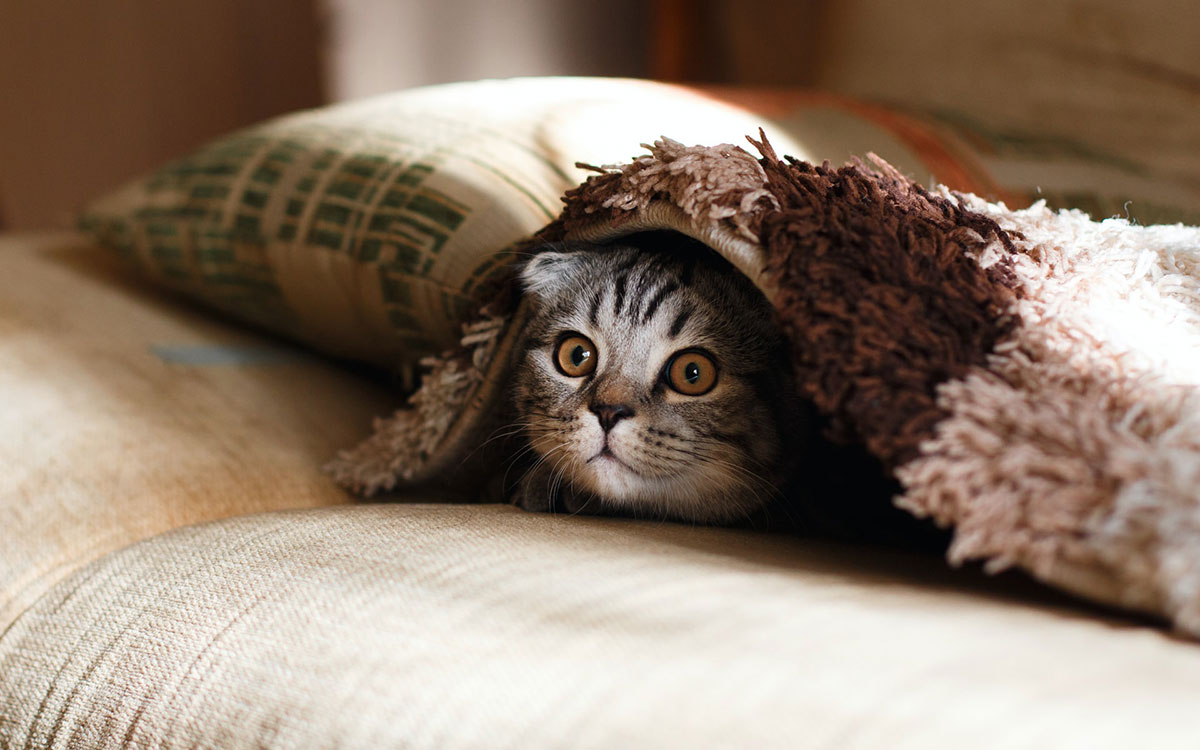Caring for a diabetic cat needs special attention. Proper food, treatment, and routine are crucial.
Diabetes in cats can be challenging, but with the proper care, your furry friend can lead a happy life. Understanding the disease is the first step. Diabetes impacts how your cat’s body uses sugar. It can cause weight changes, thirst, and tiredness.
Special diets and medications help manage the condition. Daily routines are vital to keeping your cat healthy and comfortable, and regular check-ups ensure your cat’s needs are met. This guide will explore essential steps to care for your diabetic cat. You will learn about food choices, treatment options, and daily routines. With dedication, your cat can enjoy life despite diabetes challenges.
Identifying Diabetes In Cats
Identifying diabetes in cats can be challenging but essential. Early detection helps manage the condition effectively. Diabetes in cats often goes unnoticed until it becomes severe. Understanding the signs and symptoms is crucial for cat owners.
Signs And Symptoms
Cats with diabetes show specific signs. Increased thirst and urination are common. You may notice weight loss despite a normal appetite. Some cats seem more tired or weak than usual. These changes are subtle but essential.
Other signs include a dull coat and decreased activity. Some cats may develop an unusual walking pattern. They might walk on their hocks, known as the plantigrade stance. Observing these signs can prompt timely vet visits.
Diagnostic Tests
Veterinarians use several tests to diagnose diabetes in cats. Blood tests measure glucose levels. High levels may indicate diabetes. Urine tests check for glucose and ketones. The presence of these substances suggests diabetes.
A fructosamine test provides a clearer picture. It shows average blood sugar levels over weeks, helping confirm a diabetes diagnosis. Regular monitoring is crucial for managing a diabetic cat’s health.
Dietary Management
Caring for a diabetic cat involves a balanced diet, insulin treatment, and a stable daily routine. Provide specific cat food designed for diabetes management. Monitor your cat’s health regularly to ensure well-being.
Caring for a diabetic cat requires thoughtful dietary management. It’s not just about feeding your feline friend; it’s about ensuring they receive the proper nutrients to maintain stable blood sugar levels. By focusing on dietary choices, meal timing, and portion control, you can help your cat live a healthier life. Let’s explore how you can make a difference in your diabetic cat’s well-being through dietary management.
Choosing The Right Food
Selecting the appropriate food for your diabetic cat is crucial. High-protein and low-carbohydrate diets are generally recommended. These foods help regulate blood sugar levels effectively. Consider consulting with your veterinarian to find a specialized diet that suits your cat’s needs. Many brands offer prescription diets formulated specifically for diabetic cats. Reading labels and understanding the content of the food you buy can make a big difference. When my cat, Felix, was diagnosed with diabetes, switching to a high-protein diet transformed his energy levels. The change was noticeable and showed me the impact of choosing the right food.
Meal Timing And Portion Control
Timing is everything when it comes to feeding a diabetic cat. Regular meal times help maintain stable blood sugar levels. Aim for consistent feeding schedules that align with your cat’s insulin shots. Overfeeding can be as harmful as underfeeding. Measuring portions ensures your cat receives the right amount of food without excess calories. Use a kitchen scale or measuring cup for accuracy. A friend once shared how setting alarms for her cat’s meal times helped maintain a routine. This simple strategy not only benefited her cat but also made her own life more organized. Could a structured meal plan work for you and your feline friend? Understanding your cat’s dietary needs and making informed decisions contribute significantly to their overall health. After all, small changes can lead to big improvements in their quality of life.
Administering Insulin
Giving insulin to a diabetic cat requires care and precision. Ensure the dose is correct and inject under the skin. This routine helps manage blood sugar levels effectively.
Administering insulin to a diabetic cat is a crucial part of their care. Insulin helps regulate their blood sugar levels. It ensures they lead a healthy and active life. Many cat owners feel anxious about administering insulin. But with practice, it becomes a routine task. Here’s what you need to know about insulin for cats.
Types Of Insulin
Different types of insulin are available for cats. The most common ones are long-acting and intermediate-acting insulin. Your vet will recommend the best type for your cat. Each type works differently in the body. It’s important to follow your vet’s advice. Some insulins last longer in the bloodstream. Others start working faster. Understanding how each type works helps in managing diabetes.
Proper Injection Techniques
Giving your cat an insulin injection can be simple. First, gather all your supplies. Make sure you have insulin, a syringe, and alcohol swabs. Find a quiet place to do the injection. Gently hold your cat to keep them calm. Pinch a fold of their skin, usually at the scruff of the neck. Insert the needle quickly and smoothly. Inject the insulin and remove the needle. Praise your cat after the injection. This makes the process less stressful for both of you. Practice will make the process easier over time.

Monitoring Blood Glucose Levels
Monitoring blood glucose levels is crucial for managing a cat with diabetes. Regular checks help ensure your feline friend stays healthy and comfortable. Understanding how to monitor and interpret these levels empowers you to provide better care.
Using A Glucometer
Using a glucometer to check your cat’s blood sugar is simple. Choose a glucometer designed for pets. Ensure you have clean hands and gather all necessary supplies. Gently prick your cat’s ear or paw pad to collect a small blood sample. Place the sample on the test strip. Follow the glucometer’s instructions to obtain the reading.
Practice patience. Some cats may resist at first. To make the process smoother, offer treats or gentle praise.
Interpreting Results
Interpreting blood glucose results is vital for adjusting treatment plans. Normal levels usually range between 70 and 150 mg/dL. Levels above or below this indicate potential issues. Consistently high readings may require a visit to the vet. Low readings can signal hypoglycemia, which needs immediate attention.
Keep a log of daily readings. Share this information with your veterinarian to track progress. This will help you make informed decisions about diet and insulin adjustments.
Exercise And Activity
Exercise plays a crucial role in managing diabetes in cats. It helps maintain a healthy weight and supports insulin function. Regular activity can improve your cat’s mood and energy levels. It also strengthens muscles and joints. However, not all exercises are safe for diabetic cats. Knowing which activities to choose is vital. Let’s explore safe exercises and their benefits.
Safe Exercises For Cats
Interactive toys are great for diabetic cats. They stimulate their mind and body. Use feather wands to encourage playful movement. Laser pointers can also engage their curiosity. Ensure sessions are short to avoid overexertion. Gentle climbing activities can strengthen their muscles. Consider investing in a cat tree. It provides safe climbing and jumping opportunities. Always monitor your cat during exercise. Adjust activities based on your cat’s needs.
Benefits Of Regular Activity
Regular exercise helps control blood sugar levels. It aids in maintaining a healthy weight. Active cats have improved cardiovascular health. Exercise boosts their immune system. It can reduce stress and anxiety in cats. Active cats tend to be happier and more satisfied. Exercise can also prevent muscle atrophy. It keeps their joints flexible and strong. Regular activity promotes a better quality of life.
Managing Stress And Environment
Caring for a diabetic cat involves managing stress and the environment. Provide balanced meals and regular insulin shots. Create a calm home with a structured daily routine to support your cat’s health and happiness.
Managing stress and the environment is crucial for a diabetic cat. Stress can worsen symptoms and affect blood sugar levels. Creating a calm and stable environment helps maintain a healthy routine, which can lead to better management of the condition.
Creating A Calm Space
A calm space reduces anxiety for your cat. Choose a quiet spot in your home away from loud noises. Provide a cosy bed for your cat to relax in. Ensure the area is warm and draft-free. Soft lighting can create a peaceful ambience. Keep this space consistent for your cat’s comfort.
Reducing Environmental Stressors
Identify and reduce stressors in your cat’s environment. Keep the household routine predictable. Feed and medicate your cat at the same time daily. Limit new people or animals from entering your home. Use pheromone diffusers to soothe your cat. Reduce clutter and obstacles in your cat’s path. This helps them move around with ease. By managing stress and the environment, you support your cat’s health. This improves their quality of life significantly.
Regular Veterinary Check-ups
Keeping your diabetic cat healthy involves regular vet check-ups. These visits help track your cat’s health and manage diabetes effectively. Regular monitoring ensures any changes are quickly addressed. This proactive approach prevents complications and ensures your cat’s well-being.
Frequency Of Visits
How often should you visit the vet? Ideally, every three to six months. This frequency allows for early detection of potential issues. Consistent vet visits help adjust treatments if necessary. Your vet will guide you based on your cat’s needs.
What To Expect During Check-ups
Vet check-ups include several important tests. Blood glucose levels are checked to monitor diabetes. The vet will also examine your cat’s weight and overall health. Urine tests may be conducted to check for infections. Each visit helps tailor your cat’s care plan. Expect advice on diet and insulin adjustments. Your vet will provide insights on managing daily routines. These visits ensure your cat lives a comfortable life.

Emergency Situations
Handling emergencies with a diabetic cat involves quick thinking. Ensure access to proper food and insulin treatment. Maintain a stable daily routine to manage glucose levels effectively.
Caring for a diabetic cat requires vigilance, especially in emergencies. Quick thinking and decisive action can make all the difference. Knowing how to respond when your cat is in distress can be lifesaving. Let’s focus on one of the most critical emergencies: hypoglycemia.
Recognizing Hypoglycemia
Hypoglycemia, or low blood sugar, can sneak up on your cat. You might notice your cat acting unusually lethargic, shaky, or disoriented. These are key signs that your cat’s blood sugar may have dropped too low. Watch out for excessive hunger, sudden weakness, or unsteadiness on their feet. If you see these symptoms, it’s time to act fast. Do you have a plan in place for when this happens?
Immediate Actions To Take
When hypoglycemia strikes, the first step is to stay calm. Your response needs to be quick but composed. Have a small amount of syrup or honey ready. Gently rub it on your cat’s gums to help raise their blood sugar levels. Monitor your cat closely after administering the syrup. If they do not improve within a few minutes, it’s crucial to contact your veterinarian immediately. Keep emergency contact numbers readily accessible. Being prepared can save valuable time. How ready are you for such situations? Create a checklist of what to do and keep it handy. It is the reminder you need in a stressful moment.
Support And Resources
Caring for a diabetic cat involves careful attention to diet and treatment. A balanced food plan helps manage blood sugar levels. Regular vet visits and consistent medication routines ensure proper care and well-being.
Caring for a cat with diabetes can be challenging, but you’re not alone. There are numerous support systems and resources available that can make managing your feline friend’s health easier and more effective. Whether seeking advice from online communities or professional guidance, these resources can provide both reassurance and practical help.
Online Communities
Online communities are a treasure trove of information and support. These platforms bring together cat owners who are dealing with similar challenges. Sharing stories and tips can be incredibly helpful. You can learn about different food brands that worked for someone else’s diabetic cat or discover useful techniques for administering insulin. Consider joining forums or social media groups dedicated to diabetic pets. The members often share their experiences, providing invaluable insights that textbooks might miss. Remember, each cat is unique, but hearing diverse perspectives can broaden your understanding and approach to managing diabetes in your cat.
Professional Guidance
While online communities are great, professional guidance is crucial for managing your cat’s diabetes effectively. Regular vet visits ensure your cat’s treatment plan is tailored to their needs. Vets can monitor your cat’s blood sugar levels and adjust medications accordingly. Nutritionists specializing in animal health can help design a diet that supports your cat’s condition. They can suggest high-protein, low-carb foods that regulate blood sugar levels. Consulting professionals provides peace of mind, knowing experts monitor your cat’s health. Support and resources are there to empower you. Have you considered how connecting with others and experts could transform your approach to caring for your diabetic cat?
Frequently Asked Questions
What Is The Best Feeding Schedule For A Diabetic Cat?
Feed a diabetic cat twice daily, around insulin injection times. Consistent timing helps regulate blood sugar levels. Include low-carb, high-protein food. Consult your vet for specific dietary needs. Maintain hydration and monitor health changes regularly for optimal care.
What Not To Feed A Diabetic Cat?
Avoid feeding a diabetic cat high-carbohydrate foods, sugary treats, and dry kibble. Stick to low-carb, high-protein diets. Check labels for sugar content and avoid foods with corn syrup. Consult a vet for specific dietary needs and recommendations.
What Is A Diabetic Cat’s Routine?
A diabetic cat’s routine includes regular vet check-ups, insulin injections, and a consistent feeding schedule. Feed a balanced, low-carbohydrate diet. Monitor glucose levels frequently to ensure stability. Maintain a stress-free environment and encourage regular physical activity to keep your cat healthy.
How To Care For A Diabetic Cat At Home?
Monitor blood sugar levels regularly. Provide a balanced, vet-recommended diet. Administer insulin as prescribed. Ensure regular vet check-ups. Maintain a stress-free environment for your cat.
Conclusion
Caring for a diabetic cat takes patience and love. Proper food and treatment help manage their health. Stick to a regular feeding and insulin shot routine. Monitor their blood sugar levels closely. Keep an eye on your cat’s behaviour and energy.
Consult your vet for any concerns or changes. A well-planned routine keeps your cat healthy and happy. Your dedication makes a big difference in their life. Remember, each small step counts. Enjoy the special bond you share with your feline friend.






